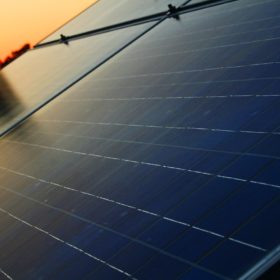
A report by Finnish company Wärtsilä has estimated the potential impact if every dollar committed to a non-renewables energy sector recovery was instead funneled to clean power.
Taxpayers will be left to pick up the bill in nations which tilt Covid-recovery packages towards fossil fuels, according to a new report, because the bad economics of legacy generation assets will force companies to withdraw somewhere down the line – and leave a big clean-up operation.
Kingsmill Bond could be accused of over optimism when he writes, in a new publication by Finnish marine and energy company Wärtsilä, that last year “global demand for fossil fuels peaked and is unlikely to recover to its pre-[Covid-19]crisis levels,” however other statements he made in the report appear undeniable. Bond, an energy strategist for London-based thinktank Carbon Tracker, warns governments “it would be deeply irresponsible to try and build back the old system” before adding: “business-as-usual is well and truly over.”
Wärtsilä's Aligning stimulus with energy transformation report, published today, overlays analysis of more than 200 energy-focused Covid recovery stimulus policies announced in G20 nations since March, with modelling of how nations could arrive at 100% clean energy power mixes. The latter, Atlas of 100% Renewable Energy tool drawn up by Wärtsilä – and based on a database compiled by Finland's Lappeenranta-Lahti University of Technology – enables the report to forecast how much further towards 100%-renewables nations could get if they devoted all their Covid recovery cash to clean power.
Fossil fuel bias
The Wärtsilä study found that while Australia, Germany and, possibly Brazil have thus far committed more support to clean power, the policies announced in the U.K. and U.S. lean heavily towards helping fossil fuel generators get back on their feet.
According to the report, the U.K. – the first nation state in the world to set a legally binding net-zero 2050 carbon emission target – has committed $158 million to post-Covid clean energy support versus a startling $5 billion for fossil fuels. The U.S. fares little better, with President Trump committing around $72 billion to the fossil fuel recovery and only $28 billion for clean power.
As a result, the report considers fully renewable energy systems possible in Germany, southeastern Brazil and eastern Australia – provided that fossil fuel bounty is redirected – but can contemplate only a best-case 60% clean energy scenario in the U.K. The U.S. could hit zero-carbon by 2035, states the study, with an additional $1.7 trillion investment.
Reallocating the $72 billion earmarked for fossil fuels in the U.S. to instead fund clean energy could drive 107 GW of new renewables generation capacity, create 544,000 associated jobs – 175% more than would be generated by fossil fuel support – and would see renewables rise from supplying 17.5% of the national energy mix to 24%, according to Wärtsilä. The extra $1.7 trillion mentioned above would buy 1.7 TW of clean energy projects, 410 GW of battery storage, 116 GW of renewables-powered gas peaker plants, 151 GW of electrolyzer capacity and 8.7 million clean power jobs, the study added.
With Texas accounting for 10% of U.S. electricity demand, devoting just 10% of national fossil fuel Covid recovery support – $7.2 billion – to renewables would secure 54,000 jobs and 10 GW more solar and wind capacity, with PV generating 37% of the state's electricity.
Some 13 GW of solar generation capacity would supply 2% of U.K. electricity in a 60% renewables power mix if the fossil fuel commitments made by the government since March were instead turned over to renewables, said the authors of the Wärtsilä report. That outcome was premised on the total $5.5 billion committed to post-Covid energy support being used to leverage three times as much private investment, for a $16.5 billion warchest which could fund 120,000 new clean energy jobs – 180% more than expected from fossil fuel backing. Even in the 60% renewables system, though, natural gas and nuclear would play a role, according to the study, in a nation still to specify how it plans to hit net zero in 2050.
‘Other'
Brazil has reportedly committed $780 million of its $4 billion of energy-related coronavirus recovery support to clean energy and $600 million to fossil fuels – presuming the ‘$600 billion' figure given in the report is a misprint, of course. The question mark surrounds the $2 billion pledged for “other” forms of energy. That is likely to relate to policies aimed at both fossil fuel and clean energy generation, as a note in the report indicates, although it could refer to nuclear, biofuel, biomass, biogas, incineration or hydrogen from unspecified generation. The southeastern region of the nation which could reach a fully renewable energy mix would draw 36% of its power from solar if fossil fuel support were diverted to clean power, according to the report.
Photovoltaics could generate 23% of a fully renewable power system in Germany, said Wärtsilä. The country has committed $27 billion since March to back clean energy plus $22 billion for fossil fuels and $12 billion for that troublesome ‘other'.
Australia also appears to have taken a step in the right direction, despite the constant howls of disapproval directed at the Scott Morrison administration. The eastern region of the country could include 29% solar in a fully renewable power mix if a change was made to post-Covid planning for US$660 million for clean energy, US$480 million for fossil fuels and US$270 million for other power generation – most of the latter in the form of a hydrogen strategy which does not specify the generation source for the gas.
Lắp đặt điện mặt trời Khải Minh Tech
https://ift.tt/2X7bF6x
0906633505
info.khaiminhtech@gmail.com
80/39 Trần Quang Diệu, Phường 14, Quận 3
Lắp đặt điện mặt trời Khải Minh Tech
https://ift.tt/2ZH4TRU
Không có nhận xét nào:
Đăng nhận xét